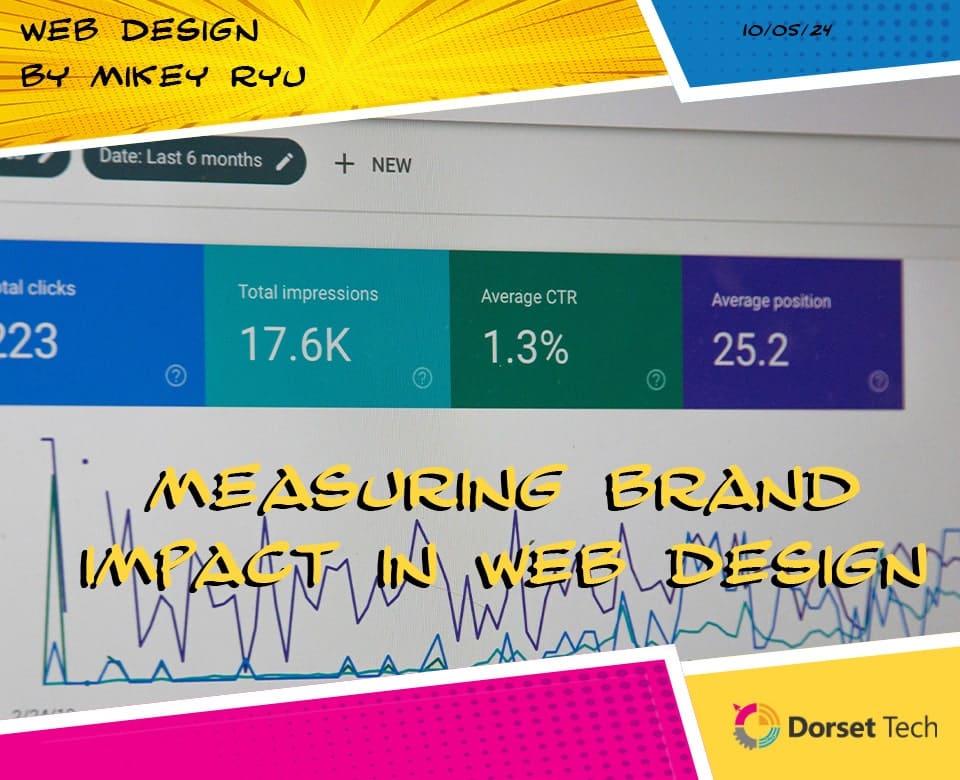
Measuring Brand Impact in Web Design:
In the ever-evolving digital landscape, where brands compete for attention in a crowded marketplace, measuring the impact of branding in web design is crucial for success. Beyond aesthetics and functionality, a website serves as a powerful tool for shaping brand perception, building trust, and driving engagement. Understanding the significance of measuring brand impact allows businesses to gauge the effectiveness of their web design strategies, identify areas for improvement, and ultimately strengthen their brand presence online.
Key Metrics for Assessing Branding Success in Web Design
Measuring brand impact in web design requires a comprehensive approach that considers various key metrics. These metrics provide valuable insights into how effectively the website communicates the brand’s identity, resonates with its audience, and drives desired outcomes. Key metrics may include website traffic, bounce rate, time spent on a page, conversion rate, and more. By analysing these metrics, businesses can assess the overall effectiveness of their branding efforts and make data-driven decisions to optimise their web design strategies.
Quantifying Brand Awareness: Tracking Reach and Visibility
Brand awareness is a fundamental aspect of brand building, and measuring it in the digital realm involves tracking reach and visibility metrics. Metrics such as website traffic, impressions, and social media mentions provide insights into the extent to which the brand is being discovered and recognised by its target audience. By monitoring these metrics over time, businesses can gauge the effectiveness of their branding efforts and identify opportunities to expand their reach and visibility online.
Engaging User Interaction: Evaluating Brand Engagement Metrics
User interaction metrics play a crucial role in assessing brand engagement and affinity. Metrics such as time spent on a page, pages per session, and interaction with interactive elements (e.g., forms, videos, etc.) indicate the level of engagement users have with the brand online. High levels of engagement suggest that the website is effectively capturing and holding users’ attention, fostering a deeper connection with the brand. By analysing these metrics, businesses can refine their web design strategies to encourage greater user engagement and interaction.
Analysing Brand Sentiment: Leveraging Feedback and Perception Data
Understanding how users perceive the brand is essential for assessing brand impact in web design. This involves analysing feedback and perception data gathered through various channels, such as surveys, reviews, and social media sentiment analysis. Positive sentiment indicates that the website is effectively conveying the brand’s values and resonating with its audience, while negative sentiment may signal areas for improvement. By leveraging feedback and perception data, businesses can gain valuable insights into how their branding efforts are perceived and make informed decisions to enhance brand perception online.
In conclusion, measuring brand impact in web design is essential for assessing the effectiveness of branding efforts, optimising web design strategies, and ultimately strengthening brand presence online. By understanding the importance of measuring brand impact, identifying key metrics for assessment, quantifying brand awareness, evaluating user engagement metrics, and analysing brand sentiment, businesses can gain valuable insights into how their website is performing in terms of communicating brand identity, resonating with their audience, and driving desired outcomes.





















